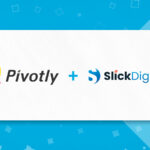> Articles > What is Enterprise Application Integration?

What is Enterprise Application Integration?
Data silos appear when your apps operate independently. This means employees miss out on critical information that could help them perform their jobs effectively. As a result, their productivity declines, and the experience for customers and prospects worsens. This is where enterprise application integration comes into play.
You may wonder, what is enterprise application integration (EAI)? This is a process to eliminate data silos and stop new ones from emerging by connecting your apps and allowing data to flow between them using EAI. However, EAI is much more complicated than just eliminating data silos.
Enterprise Application Integration Defined
Connecting a company’s business apps, services, databases, and other systems into an integrated framework that promotes communication and interoperability is known as enterprise application integration. An Enterprise Application Integration platform automates workflows and corporate processes while facilitating the smooth interchange of data. The platform guarantees that data is used uniformly throughout the company and that modifications made to one system’s data are accurately reflected in other systems.
An EAI platform functions similarly to middleware that joins diverse systems. It is possible to deploy the platform without changing or reprogramming the systems involved. Rather, the platform makes use of technologies like application programming interfaces (APIs), enterprise service buses (ESB), service-oriented architecture (SOA), and message-oriented middleware (MOM) to make it possible for systems to cooperate.
Numerous on-premises apps and cloud-based services may be supported by an efficient EAI platform. Due to the platform’s flexibility, adding, removing, or updating apps or services is simple and doesn’t need extensive system redesigns or negatively affect productivity.

The Importance of Enterprise Application Integration
Reduced manual procedures, fewer data inaccuracies, and improved insights into the organization’s data can all result from the tools and capabilities that the top enterprise application integration platforms offer to allow applications and services to exchange their data and operations.
As data volumes increase and applications get more complex, system integration becomes even more crucial. An efficient EAI platform may provide a company with the following significant benefits:
Better Data Quality
An integrated EAI platform ensures that data is more reliable and consistent. This enhances the quality of the data and facilitates its comprehension, sharing, and collaboration. Additionally, better analytics and more efficient decision-making are a result of the higher-quality data.
Reduced Data Silos
By integrating data across systems, EAI minimizes or eliminates data silos. All systems and users may access the data, and regardless of the tasks they are attempting to do, they now have a single view of the data.
Streamlined Operations
EAI platforms integrate core applications and services, enhancing operational efficiency and automating business processes. This reduces the time and effort required to complete tasks.
Better Customer Experience
An accurate, consistent, and current picture of the data is offered by an EAI platform. Sales inquiries, support calls, customer resource management, self-service account changes, and other operations are streamlined and expedited when the organization’s employees and customers have access to the information they require at the appropriate time.
Cost-Effectiveness
Employee productivity and business process efficiency both increase with the usage of an EAI platform, which can lower total expenses. Employees can have more time to concentrate on new projects, which can also result in new revenue streams. Additionally, the platform’s capacity to integrate existing systems helps lower IT costs.
Types of Enterprise Application Integration
Organizations can pick from a variety of solutions since various vendors construct their EAI systems in different ways.
The particular needs and requirements of the company will determine which design is best. Here are some common types of enterprise application integration platforms:
Point-to-Point Integration
This is the most basic type of EAI. It involves taking data out of one system, reformatting it if needed, and then ingesting it into the next system. Implementing this kind of connectivity for a few applications and minor workflows is rather easy. However, if additional apps are introduced, the platform can become unmanageable.
Hub-and-Spoke Integration
With this method, data exchanges between the participating apps are facilitated by a central component or hub. In the case that an application slows down, the hub reformats the data and maintains processes. Although hub-and-spoke integration is more complicated to set up and maintain, it is quicker and more dependable than point-to-point.
Bus Integration
Bus Integration, an advancement of hub-and-spoke architecture, is also known as an ESB. Through the central bus, all participating apps transmit and receive data or operations according to a set of standards. Although this makes integration quick and simple, it takes more effort to design and execute.

Middleware Integration
Applications, data, and users are all connected by the EAI platform, which is implemented as an intermediary layer. Different methods are used by middleware systems to provide EAI services. For instance, a platform may employ a technology like MOM, application server middleware, or transaction processing monitors, or it may be built on a bus or hub-and-spoke architecture.
Microservices
Microservices, which are tiny, light-weight programs with distinct functions, can be used to construct an EAI platform. Microservices can be developed as dedicated applications or as serverless tasks. They make use of industry-standard protocols and APIs to interface with the different systems. Additionally, microservices are easily deployable as cloud workloads.
Conclusion
Fostering smooth communication between diverse systems within a business requires enterprise application integration (EAI). It improves customer experiences and efficiency by minimizing data silos, enhancing data quality, and simplifying processes.
In today’s complex digital world, selecting the appropriate integration type based on particular company demands guarantees successful implementation, which eventually leads to increased efficiency and success.
Frequently Asked Questions
What Are the Main Benefits of Implementing an Enterprise Application Integration (EAI) System?
There are several benefits of the EAI implementation, including streamlined operations, reduced data silos, and enhanced data quality. Companies can ensure a reliable and consistent flow of data that enhances their overall efficiency and decision-making ability.
How Does EAI Differ from Traditional Data Integration Methods?
EAI allows real-time data exchange and interoperability between applications and services. This helps with the continuous communication between the systems, enabling them to work seamlessly and adapt to the growing needs of the business.
Can EAI Support Both On-Premises and Cloud-Based Applications?
EAI successfully connects to both cloud-based and on-site software. A well-designed EAI framework links varied systems regardless of their location. This adaptability assists businesses in incorporating their current infrastructure with new cloud services to build a unified environment, fostering teamwork. Connect with our team of experts to discuss more on Enterprise Application Integration.
Latest Posts
-
 10 Jun 2025 Company NewsPress Release: SlickDigital Joins Pivotly to Advance Custom App Development for AI-Driven Enterprises
10 Jun 2025 Company NewsPress Release: SlickDigital Joins Pivotly to Advance Custom App Development for AI-Driven Enterprises -
 21 Nov 2024 Data MigrationKey Data Migration Challenges and Effective Strategies to Overcome Them
21 Nov 2024 Data MigrationKey Data Migration Challenges and Effective Strategies to Overcome Them -
 21 Nov 2024 Blockchain DevelopmentHow to Choose the Right Blockchain Platform for Your Development Project?
21 Nov 2024 Blockchain DevelopmentHow to Choose the Right Blockchain Platform for Your Development Project? -
 21 Nov 2024 MVP DevelopmentHow to Validate Your Business Idea with MVP Development
21 Nov 2024 MVP DevelopmentHow to Validate Your Business Idea with MVP Development -
 19 Nov 2024 Staff AugmentationTop Benefits of IT Staff Augmentation for Growing Tech Teams
19 Nov 2024 Staff AugmentationTop Benefits of IT Staff Augmentation for Growing Tech Teams -
 19 Nov 2024 CloudHow Cloud Applications Affect the Future of Your Business
19 Nov 2024 CloudHow Cloud Applications Affect the Future of Your Business -
 18 Nov 2024 Application DevelopmentExplore the Best Tools for Effective Application Integration
18 Nov 2024 Application DevelopmentExplore the Best Tools for Effective Application Integration
